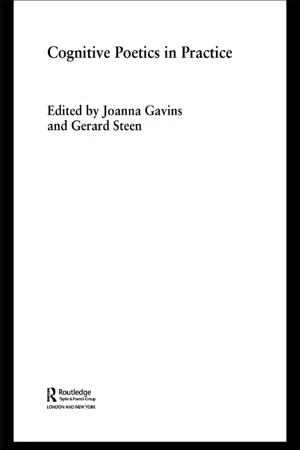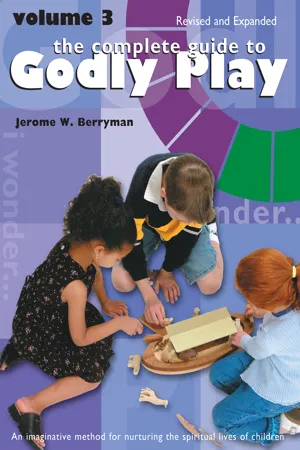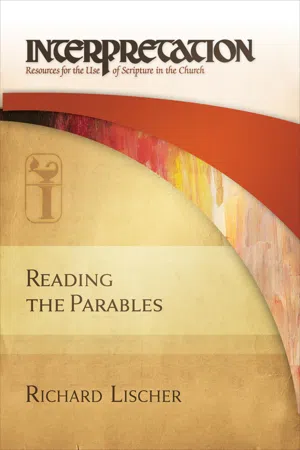Parable
A parable is a short, simple story that illustrates a moral or spiritual lesson. It often uses familiar characters and settings to convey deeper truths or teachings. Parables are commonly found in religious texts, folklore, and literature, and are used to provoke thought and reflection on ethical and philosophical themes.
8 Key excerpts on "Parable"
- eBook - ePub
Stories with Intent
A Comprehensive Guide to the Parables of Jesus
- Klyne R. Snodgrass(Author)
- 2018(Publication Date)
- Eerdmans(Publisher)
...Ultimately they are resistant, saying in effect, “Read me again.” What Is a Parable? Hardly anything said about Parables — whether defining them or explaining their characteristics — is true of all of them. For this reason every Parable must be approached in its own right and not assumed to look like or function like other Parables. A Parable is often defined as an illustration due to the “root fallacy” of deriving the meaning from paraballō, which means literally “to throw alongside.” From this people have viewed Parables as earthly stories with heavenly meanings. Although there is some truth in this saying, this approach to understanding NT Parables will not do. Parables are much more than illustrations, and although some are concerned with future eschatology, they are not about heaven. They are directed to life on this earth. In fact, possibly no definition of Parables will do, for any definition that is broad enough to cover all the forms is so imprecise that it is almost useless. Some well-known definitions deserve mention. T. W. Manson suggested “A Parable is a literary creation in narrative form designed either to portray a type of character for warning or example or to embody a principle of God’s governance of the world and men [sic].” 24 Parables do tell about God and humanity, but not all are narratives. C. H. Dodd said Parables “are the natural expression of a mind that sees truth in concrete pictures rather than conceives it in abstractions,” 25 and his definition is repeated frequently: “At its simplest the Parable is a metaphor or simile drawn from nature or common life, arresting the hearer by its vividness or strangeness, and leaving the mind in sufficient doubt about its precise application to tease it into active thought.” 26 Technically speaking, a Parable is much more than a metaphor or simile, and although this definition is helpful for many Parables, for others it will not work...
- eBook - ePub
The Parables
Jewish Tradition and Christian Interpretation
- Young, Brad H.(Authors)
- 2008(Publication Date)
- Baker Academic(Publisher)
...While the Parables serve multifaceted functions in diverse literary contexts, they effectively communicate the deep spiritual values of religious faith. In reality these metaphoric story illustrations possess the ability to transcend religious philosophies and to break into the everyday lives of the listeners. They challenge and illuminate the audience’s concept of the divine character, as well as each person’s individual relationship and responsibility to others. A study of the rich legacy of Gospel and rabbinic Parables indicates not only that these illustrations often succeed in their task but also that they provide a communal bond between nascent Christianity and ancient Judaism. In this work the Parables of Jesus will be explored in light of their Christian interpretations and Jewish tradition....
- eBook - ePub
Jesus the Hero
A Guided Literary Study of the Gospels
- Leland Ryken(Author)
- 2021(Publication Date)
- Lexham Press(Publisher)
...The only caution is that the impulse toward allegorizing is ever with us. An example is the view stated in a well-known book on the Parables that the talents in the Parable represent the Holy Spirit. That bit of allegorizing illustrates a common culprit, namely, giving a detail in the story a narrow or specific meaning rather than a general and obvious meaning. I also need to sound another caution. The Parables exist on an allegorical continuum with continuous allegory on the one end, where every detail or nearly every detail in the story has an allegorical meaning. As we move across the continuum, fewer and fewer details have an allegorical meaning. At the very end of this continuum we have what literary scholars call incarnation. This means that the whole story is the meaning. We should not strain to attach allegorical meanings to multiple details if the whole story is the meaning. A prime example is the story of the good Samaritan. The whole story answers the question that gave rise to the Parable, namely, “Who is my neighbor?” (Luke 10:29). This Parable is an example story more than an allegory: it gives us an example of neighborly behavior. The thing that got Augustine into difficulty with this Parable was his assumption that every detail needed to have a second meaning. Can we even call this Parable an allegory? My answer is yes because it is so obviously designed to teach a lesson. A heavily didactic (“having the intention to teach”) text belongs in a general way to the category of allegory. How to Interpret and Teach a Parable The process of interpreting a Parable just naturally falls into four phases. Each of these needs to be given as full a treatment as a given Parable allows. The Parable as a Story We need to begin with straightforward narrative analysis. The primary considerations are plot, setting, and character. If left to our own designs, some of the Parables are too brief to yield much only as stories...
- eBook - ePub
- Craig L. Blomberg(Author)
- 2012(Publication Date)
- IVP Academic(Publisher)
...Within the last thirty-some years, however, several scholars with cross-disciplinary expertise in Western literature and biblical studies have moved well beyond this “consensus” position, affirming that most of the major narrative Parables of Jesus are, by every standard literary definition of the word, genuine allegories. [43] These affirmations rely on four additional key principles. 6. “Multiple points of comparison” is not the single element that makes a narrative an allegory; any narrative with both a literal and a metaphorical meaning is in essence allegorical. The primary pioneer of this assertion was Madeleine Boucher, who already in 1977 observed that for most literary critics there are only two “modes” of meaning—literal and tropical (pronounced with a long o—that which is popularly called “figurative”). Some examples of tropes include circumlocution (a “roundabout” way of speaking), metaphor, synecdoche (the substitution of the part for the whole), metonymy (the substitution of one thing for something else closely associated) and irony. Any one of these tropes may be developed into a full-fledged narrative; when a metaphor is thus developed, allegory results. Allegory is “nothing more and nothing less than an extended metaphor in narratory form (the term narratory here being used to include both dramatic and narrative works, that is, all works that tell a story).” [44] Boucher further argued that allegory is a device of meaning, not a literary form or genre. So a Parable may be an allegory even if its constituent elements do not involve separate metaphors, so long as the overall point of the Parable transcends its literal meaning (e.g., the story is about the kingdom of God rather than just, say, farming, fishing or banqueting)...
- eBook - ePub
Hermeneutics
Principles and Processes of Biblical Interpretation
- Virkler, Henry A., Ayayo, Karelynne(Authors)
- 2007(Publication Date)
- Baker Academic(Publisher)
...Perhaps it is best for biblical interpreters to remember that in many instances a definitive classification may not be possible, and Robert Stein rightly recognizes that “the greater danger for most interpreters is to see too much meaning in specific details rather than too little.” 8 Similarly G. B. Caird concludes, “Parable and allegory, then, are partial synonyms, and it is less important to distinguish between them than it is to distinguish between allegory, which the author intended, and allegorical embellishment or interpretation, which he did not.” 9 Exercise 48. Read Luke 15:11–32. One interpreter argues that the single basic point of this passage is that just as the older son will not accept and rejoice in the loving forgiveness that his father has extended to his brother, so the Pharisees and teachers of the law are unwilling to accept God’s loving forgiveness of tax collectors and sinners through the ministry of Jesus. Another interpreter believes that three truths are communicated in this text: (1) Sinners may confess their sins and turn to God in repentance, (2) God offers forgiveness for undeserving people, and (3) those who claim to be God’s people should not be resentful when God extends his grace to the undeserving. Do you agree with the first or the second interpreter? Can you classify this text as either a Parable or an allegory? Explain your answer to each question. A proverb can be understood as a compressed Parable or allegory, sometimes exhibiting characteristics of both. Proverbs are typically short, pithy sayings that express general truth in a memorable and catchy manner. The following sections will discuss the nature and interpretation of proverbs, Parables, and allegories at greater length. Proverbs Walter C. Kaiser Jr. has described proverbs as sayings that are “terse, brief, have a little ‘kick’ to them, and a little bit of salt as well.” 10 Many people view proverbs as nice slogans—good mottoes to hang on one’s wall...
- eBook - ePub
- Joanna Gavins, Gerard Steen, Joanna Gavins, Gerard Steen(Authors)
- 2003(Publication Date)
- Routledge(Publisher)
...This will be done by means of a literary case study. Lastly, I will draw this chapter to a close by briefly considering the wider implications of parabolic literary theory, regarding meaning both in the mind and the brain. In sum, what this chapter will seek to demonstrate is that Parable is a fundamental, continuous, cognitive instrument of thought that we employ, largely unconsciously, both in real-world meaning construction and in literary interpretation procedures. Some preliminary background Before getting to grips with the central theory of the parabolic mind, let us first set out some preparatory background. A good starting point in this chapter on how cognitive parabolic reasoning operates is to remind ourselves of how the default, i.e. biblical, notion of Parable works. Traditional Parables are located in the New Testament of the Bible in the sections where Jesus can be found preaching about the kingdom of God. These stories were a kind of ‘metaphor in narrative form’, the primary purpose of which was to challenge the ingrained perspectives of the hearers. Parables therefore were told in order to project extra (essentially didactic) domains of knowledge into the existing world-views of the listeners. The result of this would have been a modification in the interpretative cognitive models of those listeners. The well-known story of the workers in the vineyard (Matt. 20: 1–16) provides a useful starting-point for an analysis of how Parables operate. In this parabolic tale, a number of people are set to work at different times of the day: some early in the morning and some late in the afternoon. When evening comes, the workers are paid the same amount. Those who worked all day then become angry: as do the Parable’s listeners. But Christ explains to them that in his father’s kingdom of heaven ‘the last (i.e. the poorest and weakest) shall be first’. ‘Mercy’ therefore, rather than ‘explicit reward’ is what is promised and indeed given...
- eBook - ePub
The Complete Guide to Godly Play
Volume 3, Revised and Expanded
- Jerome W. Berryman, Cheryl V. Minor, Rosemary Beales(Authors)
- 2017(Publication Date)
- Church Publishing(Publisher)
...Lesson 16 Parable of Parables A Parable about Parables How to Use This Lesson • Enrichment Presentation: An Enrichment Lesson enriches or deepens one or more of the Core Lessons. This kind of lesson goes over the same material in a Core Lesson but from a different angle. • Parable: A Parable is a metaphor that uses short narrative fiction to reference a transcendent symbol, which in the Gospels is generally the Kingdom of Heaven. The Godly Play approach to Parables includes six guiding Parables in gold boxes, Parables about Parables, side-by-sides, the Parable cards, and the Parable games (which include all the Parables of Jesus and his “I Am” statements). The materials are generally flat as opposed to the three-dimensional materials used for the Sacred Stories. • As an Enrichment Lesson in Volume 3 of The Complete Guide to Godly Play, this lesson may be presented at any time, preferably after children have heard other Parables. • It is part of a comprehensive approach to Christian formation that consists of eight volumes. Together the lessons form a spiral curriculum that enables children to move into adolescence with an inner working knowledge of the classical Christian language system to sustain them all their lives. The Material • Location: Parable shelves (on one of the second shelves, below the gold Parables from the Gospels) • Pieces: Tray or basket holding a set of nesting boxes in assorted colors • Underlay: None (Use a rug) Background Sometimes children will ask, “What’s really inside a Parable?” You have introduced this idea with every Parable presentation, so it is exciting when the question is finally raised. This is the moment you have been waiting for. Now you can say, “We have a Parable about that!” Notes on the Material Find the material for this lesson on the second shelf of one of the Parable shelves. (The top shelves hold the six guiding Parables.) Use a rug, not an underlay, so you don’t give away the number of boxes within boxes...
- eBook - ePub
Reading the Parables
Interpretation: Resources for the Use of Scripture in the Church
- Richard Lischer(Author)
- 2014(Publication Date)
- Westminster John Knox Press(Publisher)
...In that more capacious experience of meaning, the crucified one is the Treasure hidden in the field. What we have said of the thirty-one-word (Greek) sentence in Matthew 13:44 is doubly true of the longer and more complex narrative Parables, which are even less likely to yield a single truth. We have already discussed the difficulty in finding a center in the Parable of the Wicked Tenants, an elliptically shaped story whose focus appears to shift from the owner’s intention to the tenants’ response and back again to the owner’s final act of resolution. In this movement the most highly valued character in the story, the son, takes only a passive role. Many Parables resist the one-point theory. When Helmut Thielicke preached on the Prodigal Son, he found its thrust so divided that he preached two sermons on it, one for each of the two brothers. The preacher may follow the same procedure for Matthew’s allegory of the Great Feast, which includes a second movement, the Parable of the Improper Garment. To sum it up in a single point (with three clauses!): A Parable may indeed teach one truth, but you will need to dig for it, and when you find it, it will be more than you bargained for. Theory IV: Parables Undermine “the Truth” The Parables of Jesus operate against a background of Israel’s sacred history, values, and personages that, taken together, constitute its mythos, its grand and internalized account of itself. The myth includes the chosenness of Israel, the rectitude of divine judgment, the purity of religious observance, the glory of power, the righteousness of the law, and the separateness of a people. These are the pillars of Israel’s universe; they contribute in great measure to the Christian mythos as well. Myths are not necessarily fanciful, made-up stories from long ago; they are the massive structures upon which a civilization or religion is built and by which it reconciles the inherent contradictions in its own past...







